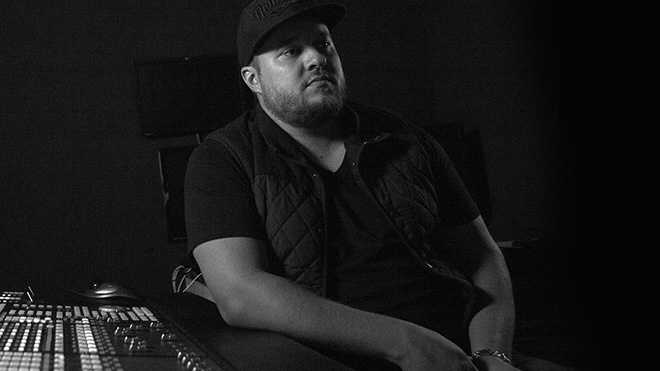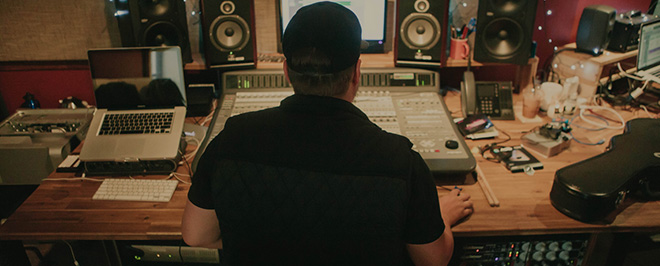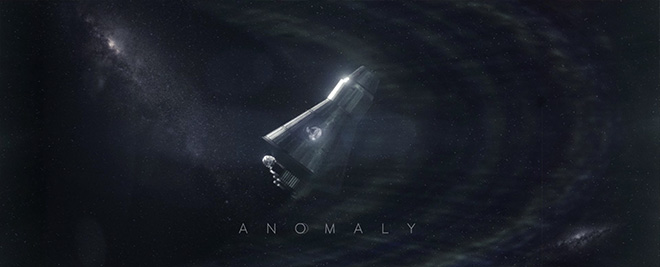We rarely get the chance to talk about sound design and music in short films, but we cannot deny the importance of it to keep an audience intrigued and glued to the film for the entire length. The evidence could not be clearer in Salomon Lighthelm‘s incredible short film ‘Anomaly’, where the sound becomes just as powerful as its visuals to create an unforgettable experience. We were lucky enough to be able to grab a few words with the composer of the film’s soundtrack Ryan Taubert, also known as Anamog.
If you haven’t seen the film, make sure to check it out First!
Where did you get your inspiration for the Anomaly score?
Anamog: Salomon Ligthelm, one of the directors, and I chatted on and off over the course of a year as we experimented with different ideas while both working on other projects. What we wanted to achieve was an intimate score with an element of scale. The film has a lot of tension and emotional overtones. It’s about this beautiful event that happens right in the midst of overwhelming chaos. We thought the score should reflect that somehow. From there, it was trial and error to find the right sound pallet where beauty and chaos could coexist. To be honest, in the beginning, I really felt like I didn’t know what I was doing. I was crafting a sound that I’d never done before. The uncertainty I think worked in my favor because it allowed me to throw all preconceptions of what something is supposed to sound like out the window and just create.
How did you get involved with the film?
Anamog: Salomon and I had already been working on projects together for a few years before Anomaly. I think that over that time, we got to know each other’s style and also how to best communicate with each other creatively. It was really a natural progression. He had already been discussing his ideas with me back when it was only dreamt to be a 3-minute film.
This film is sci-fi but the beginning is a bit of a love story. Was it hard going back and forth to find the balance?
Anamog: Not so much because the creative direction was never about it being a sci-fi film. It’s really a human story about broken relationships intertwined with an astronomical event. Although I wanted to represent some of the mystery element in the music, I was always intentional about keeping the heart of the story intact.

Did you use one instrument more than others with this score?
Anamog: Well there is a couple re-occurring instruments throughout. From the beginning stages of the sketches, Salomon and I both wanted to play around with pulsing woodwinds. They turned out to be a driving force for the score through a lot of the cues. The other sound used a lot was textural strings, which gave it the tension it needed. The combination of strings and synths with the beauty of woodwinds and piano are really the blueprint of the score.
Since the film takes place in the 1960s, did that influence the tone you were going for?
Anamog: Not at all. I was more concerned with establishing an emotional connection. I think if you get too literal with time periods it can become too historical and less personal to the viewers. Besides, the whole film is abstract anyways.
How was the score designed to mix with the sound effects? Or did the sound effects come after the music? (The mix is just seamlessly wonderful)
Anamog: Yes, that was one idea that was paramount since the beginning. Salomon loves sound design and likes it when the lines are blurred between it and the score. So the challenge for me was to create musical interest without drawing attention away from the intricacies there. In a lot of the scenes, sound design was the most important element. So when needed, I would back off on the score to accommodate that. In the end, the score and sound design kind of became one beast.
Did you work closely with the director? Did he have a clear understanding of what he wanted the score to be like or did you have the creative freedom to explore your own sound?
Anamog: Both. Salomon is very detailed and specific with what he wants but at the same time he allowed me to freely create and test some boundaries. We often like different things, which could have made the process a challenge. But instead, I saw it as an opportunity to push myself beyond my normal tendencies and incorporate elements in unfamiliar ways. Ultimately, it was that push and the synergy between both of us that resulted in a score I’m really proud of.

What was the most challenging part about creating the Anomaly score?
Anamog: The most challenging I think was creating a sense of scale and beauty without sounding like a typical epic score. Staying away from the clichés and creating something that feels new is always the most challenging thing. Our ears are usually tuned to what has inspired us in the past, but rising above that and entering in new territories is so hard but fun at the same time.
The sequence when she is going into labor and the civilians are being warned to stay inside is very intense. Your score brings the emotion and anticipation to another level. How long did it take you score this sequence?
Anamog: That cue probably took a couple weeks to get right. We had a couple completely different old sketches basically layered on top of one another. One of them was pretty and the other was just intense and dark. I was trying to combine both emotions into one cue by having the subtle piano and woodwind pulses mesh with the rumbling percussion in the background.
What did you think of the music and score of Anomaly? Let us know your thoughts in the comments.


